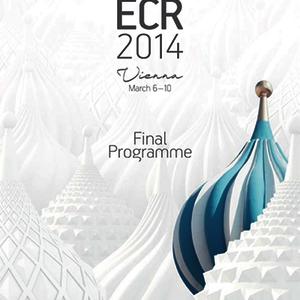جعفرزاده, حمید ، مهريان, پيام ، کریمی, محمدعلی ، همايونفر, نسرین ، پورقربان, رامين (1392) تظاهرات پروتئينوز آلوئولار ريوي ايديوپاتيك در CT با رزولوشن بالا. در: European Congress of Radiology 2014, March 6-10, 2014, Austria-Vienna.
متن کامل
|
متنی
- نسخه چاپ شده
730kB | |
![[img]](https://eprints.arums.ac.ir/5400/7.hassmallThumbnailVersion/ECR_2014_FinalProgramme_OnlineVersion_0.jpg)
|
تصویر
97kB |
آدرس اینترنتی رسمی : http://ipp.myesr.org/esr/ecr2014/index.php?p=recor...
عنوان انگليسی
High-resolution computed tomography features of idiopathic pulmonary alveolar proteinosis
خلاصه انگلیسی
Pulmonary alveolar proteinosis (PAP) is a rare disease characterized by alveolar deposition of surfactant-like or periodic acid- schiff proteins [1,2]. Since the first description of PAP by Rosen et al. [3], this disease has been reported mainly in the case reports or some limited studies [4]. PAP has three forms: congenital, idiopathic (primary), and secondary. Idiopathic form is the most common type accounting for about 90% of all PAPs [1]. Secondary PAP usually occurs due to exposure to some materials such as silica, cement, aluminum, titanium or nitrogen dioxide. It may also be secondary to a hematologic malignancy or various types of immunodeficiency disorders [1,2,5] . Indeed, PAP is the final outcome of surfactant and pulmonary immune disorders and elevated serum granulocyte-monocyte colony stimulating factor (GM-CSF) antibodies are seen in idiopathic PAP [6,7,8]. It is postulated that these antibodies prevent the final differentiation of alveolar macrophages and thereby interfere with surfactant clearance [1,8]. Typical radiographic appearance of PAP is bilateral symmetric opacities with sparing of apices and costophrenic angles [1]. Less frequently it may appear as multifocal asymmetric opacities or consolidations [1,2]. In some cases, especially in moderate disease, the radiographic involvement may be greater than clinical presentation (clinicoradiologic discrepancy)[9]. Computed tomography, especially high resolution computed tomography (HRCT), demonstrates more details of lung involvement. Crazy-paving pattern (network-like thickened septal lines on a background of ground-glass opacity) was first reported for PAP [10]. This pattern in PAP usually is bilateral and extensive with intervening intact geographic or lobular areas1. Crazy-paving has no specific zonal distribution [11,12,13]. Although crazy-paving is characteristic for PAP, some other diseases may result in similar pattern, including pulmonary hemorrhage, infections, pulmonary edema, inhalation disorders, malignancies (bronchioalveolar carcinoma, lymphangitic carcinomatosis), radiation, and some drugs [1,14,15,16]. Because the crazy-paving pattern is not specific for PAP and related studies on this issue are lacking and also other diseases can mimic this pattern, new studies may help us to better understand the more specific radiologic presentations of idiopathic PAP. Furthermore, familiarity with various pattern of lung involvement on HRCT of patients with idiopathic PAP is essential for early diagnosis of this life threatening disorder and decreasing its morbidity and mortality.
| نوع سند : | موضوع کنفرانس یا کارگاه (پوستر ) |
|---|---|
| زبان سند : | انگلیسی |
| نویسنده : | حمید جعفرزاده |
| نویسنده : | پيام مهريان |
| نویسنده : | محمدعلی کریمی |
| نویسنده : | نسرین همايونفر |
| نویسنده مسئول : | رامين پورقربان |
| کلیدواژه ها (انگلیسی): | Thorax, CT , HighResolution |
| موضوعات : | WF سیستم تنفسی WN پرتو شناسی |
| بخش های دانشگاهی : | دانشکده پرستاری و مامایی > بخش مامایی |
| کد شناسایی : | 5400 |
| ارائه شده توسط : | خانم نسرین همایونفر |
| ارائه شده در تاریخ : | 15 شهریور 1397 11:31 |
| آخرین تغییر : | 26 شهریور 1397 14:22 |
فقط پرسنل کتابخانه صفحه کنترل اسناد




